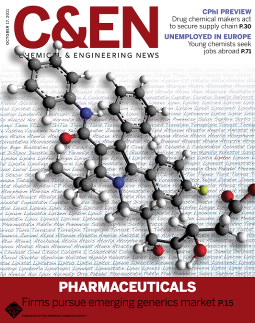FOR IMMEDIATE RELEASE
ACS News Service Weekly PressPac: October 19, 2011
Keeping acrylic paintings clean poses big challenges
“Cleaning Acrylics”
Chemical & Engineering News
With the first acrylic paintings —the medium made famous by artists like Mark Rothko, Andy Warhol, Robert Motherwell, and David Hockney —pushing 60 years of age, scientists specializing in art conservation are seeking ways to rejuvenate these paintings and keep them looking their best. That’s the topic of an article in the current edition of Chemical & Engineering News (C&EN), the American Chemical Society’s weekly newsmagazine.
In the article, C&EN Senior Editor Celia Henry Arnaud explains that acrylic paints were invented in the 1940s, with the first wave of acrylic paintings in museum and private collections now between 50 and 60 years of age. They quickly became an artistic mainstay, along with the familiar oil paints that have been used for centuries. One main difference: Oil paints can take weeks or month to dry. Acrylics, which are water-based, dry fast, often in hours.
The additives that hold acrylic paints together in the liquid stage, in tubes and on artists’ brushes and palates, are emerging as a problem. The additives make acrylic paints dirt-collectors, unusually sensitive to soiling over the years. C&EN describes the difficulty that conservators are having in cleaning acrylic paintings, and scientific research on the best ways of keeping acrylics looking fresh and young over the years.
![]()

Contact
Science Inquiries: Michael Woods, Editor, 202-872-6293
General Inquiries: Michael Bernstein, 202-872-6042


